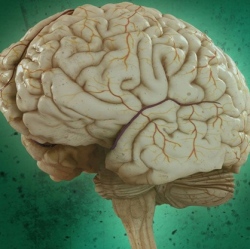
Scanning people’s brains with fMRI (functional magnetic resonance imaging) was significantly more effective at spotting lies than a traditional polygraph test, researchers in the Perelman School of Medicine at the University of Pennsylvania found in a study published in the Journal of Clinical Psychiatry.
When someone is lying, areas of the brain linked to decision-making are activated, which lights up on an fMRI scan for experts to see. While laboratory studies showed fMRI’s ability to detect deception with up to 90 percent accuracy, estimates of polygraphs’ accuracy ranged wildly, between chance and 100 percent, depending on the study.
The Penn study is the first to compare the two modalities in the same individuals in a blinded and prospective fashion. The approach adds scientific data to the long-standing debate about this technology and builds the case for more studies investigating its potential real-life applications, such as evidence in criminal legal proceedings.
Researchers from Penn’s departments of Psychiatry and Biostatistics and Epidemiology found that neuroscience experts without prior experience in lie detection, using fMRI data, were 24 percent more likely to detect deception than professional polygraph examiners reviewing polygraph recordings. In both fMRI and polygraph, participants took a standardized “concealed information” test.*
Polygraph monitors individuals’ electrical skin conductivity, heart rate, and respiration during a series of questions. Polygraph is based on the assumption that incidents of lying are marked by upward or downward spikes in these measurements.
“Polygraph measures reflect complex activity of the peripheral nervous system that is reduced to only a few parameters, while fMRI is looking at thousands of brain clusters with higher resolution in both space and time. While neither type of activity is unique to lying, we expected brain activity to be a more specific marker, and this is what I believe we found,” said the study’s lead author, Daniel D. Langleben, MD, a professor of Psychiatry.
In one example in the paper, fMRI clearly shows increased brain activity when a participant, who picked the number seven, is asked if that is their number. Experts who studied the polygraph counterpart incorrectly identified the number six as the lie. The polygraph associated with the number six shows high peaks after the participant is asked the same questions several times in a row, suggesting that answer was a lie.
The scenario was reversed in another example, as neither fMRI nor polygraph experts were perfect, which is demonstrated in the paper. However, overall, fMRI experts were 24 percent more likely to detect the lie in any given participant.
